One of the keys to healthy and long lived carp is their diet. To understand what constitutes a healthy diet, one has to understand what carp have evolved to eat and how they digest their food.
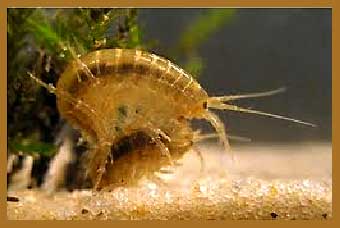 In a natural body of water, carp (who are omnivores) would be browsing continually, eating small amounts of all sorts of foods: algae, plants, insects, tiny crustaceans from water fleas to freshwater shrimps, insect larvae including black mosquito larvae, worms including the square-tailed (Eiseniella tetrahedral) worm and the sludgeworm (Tubifex tubifex), and molluscs including snails that they are able to crush with their powerful pharyngeal teeth. Basically whatever nature’s natural larder offers them even to the extent of eating fish eggs, small fry and small dead fish, tadpoles, caterpillars and slugs. Carp have nostrils located above their mouth and have a good sense of smell. The small flap of skin directs water through the front nostril opening and it flows out the back opening.
In a natural body of water, carp (who are omnivores) would be browsing continually, eating small amounts of all sorts of foods: algae, plants, insects, tiny crustaceans from water fleas to freshwater shrimps, insect larvae including black mosquito larvae, worms including the square-tailed (Eiseniella tetrahedral) worm and the sludgeworm (Tubifex tubifex), and molluscs including snails that they are able to crush with their powerful pharyngeal teeth. Basically whatever nature’s natural larder offers them even to the extent of eating fish eggs, small fry and small dead fish, tadpoles, caterpillars and slugs. Carp have nostrils located above their mouth and have a good sense of smell. The small flap of skin directs water through the front nostril opening and it flows out the back opening.
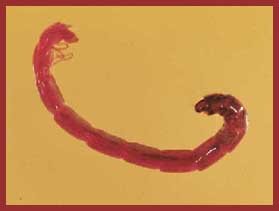 In a natural habitat, they would consume floating plants/algae, mosquito, midge fly larvae and unlucky bugs near the water’s surface. Further down in the water column, they would find daphnia, tadpoles and small fish. Rooting around on the bottom, they would sift through the mud for various aquatic organisms, worms (e.g. blackworms, bloodworm and Joker), freshwater shrimp and snails, ingesting some mud, bacteria and fungi along the way. As anglers we need to always remember that carp will be happy feeding at all levels of the lake, so we need to gear our fishing around their feeding habits to maximize our catching opportunities. Their digestive tracts have evolved to be able to digest a wide variety of foods; if it will fit in their mouth, they’ll taste it and see if it’s edible.
In a natural habitat, they would consume floating plants/algae, mosquito, midge fly larvae and unlucky bugs near the water’s surface. Further down in the water column, they would find daphnia, tadpoles and small fish. Rooting around on the bottom, they would sift through the mud for various aquatic organisms, worms (e.g. blackworms, bloodworm and Joker), freshwater shrimp and snails, ingesting some mud, bacteria and fungi along the way. As anglers we need to always remember that carp will be happy feeding at all levels of the lake, so we need to gear our fishing around their feeding habits to maximize our catching opportunities. Their digestive tracts have evolved to be able to digest a wide variety of foods; if it will fit in their mouth, they’ll taste it and see if it’s edible.
Digestion starts in the mouth where they grind their food into small particles at the back of their mouth. They also have small hollows at the back of the gill arches that trap food in the water. Mucus is secreted by the lining of the oral cavity and mixed with the food. From there, food moves down through the oesophagus to what would be the stomach if they had a stomach (which they don’t). Muscles in the oesophagus squeeze excess water out of the food. The carp’s intestinal tract is a long tube. Food gets broken down by digestive enzymes as it passes through the intestine. Proteins are broken down into amino acids. Carbohydrates are broken down into sugars. Fats are broken down into fatty acids and glycerol.
These nutrients (as well as vitamins and minerals) are absorbed into the blood stream by the intestine. The last part of the intestine has lots of mucus producing cells. Undigested food comes out the back end encased in mucus and is usually a similar colour to the food that was consumed. Carp are cold blooded so their body temperature is the same as their environment. Warmer temperatures speed up metabolism and colder temperatures slow metabolism (and digestion).
There are several practical lessons to be had from looking at how carp would eat in their natural habitat and from studying the digestive process. Because of the lack of a stomach, multiple small meals are better for carp because that is how they would eat in a natural habitat. If you over feed carp with huge large meals, a lot comes out the back end only partially digested. Lots of undigested food provides plenty of food for the bacteria that break down debris on the bottom of the lake bed. Those bacteria consume oxygen, and release ammonia increasing the bio load on the lake and ultimately raising nitrate levels.
Like humans, carp are dependent upon their senses when it comes to food. Carp can smell, taste and see the food that they plan to eat. They have a highly developed olfactory system that allows them to sense any dissolved substance in the water. The carp can see by using both eyes. However, if an item is immediately in front of and below its mouth, the carp relies on its barbules’ sense of touch and taste to detect items.
Carp can smell food items in the water. In an instant, their brain recognizes the smell and determines if it is edible. Experiments have shown that carp are able to recognize the smell of amino acids and other smells emitted by bloodworms, crayfish and aquatic plants. Green-lipped mussel extract, kelp extract, liver powder and molasses contain sucrose and amino acids, which the carp has evolved to recognise as having nutritional value. If the bait does not contain these molecules, the carp will not take it. Negative associations with the smell, such as certain foods are unsafe because they contained a hook in the past, also affect the fish’s willingness to eat.
In addition to their keen sense of smell, carp have an excellent sense of taste. The lining of their mouths have chemically sensitive cells that help it determine if the food is good or bad. Carp also have taste buds on their barbules, pectoral and pelvic fins, underneath their head and along the length of their body. These allow it to more accurately pinpoint sources of food. When a carp smells bloodworm, for example, in a silt bed, it sucks the silt and other detritus into its mouth. The palatal taste organ on the top of the mouth traps the food against the bottom of the mouth. Non-food items are expelled through the gills. Larger items are spat out. Approximately 97% of what the carp takes in is ejected. What remains is crushed by the pharyngeal teeth at the back of the mouth. These are aligned in three rows on each side of the mouth, with three teeth in the innermost row and one tooth each in the two outer rows.
There are differences in opinion as to what carp find tasteful. Some have suggested that carp love boilies, bread crust, meat baits, fruity flavours, and stilton cheese. The best items are those that either emit favourable smells or contain ingredients which mimic them. Boilies containing natural attractors, such as green lipped mussel extract or kelp extract, and a good quality protein, such as fishmeal, will attract more fish than other baits. Some anglers use peanuts. While peanuts contain lipids, sugars and amino acids, these do not mimic the natural foods carp like.
Some anglers boast about the effectiveness of flavoured imitation baits. When boilies fail to attract carp, artificial corn will usually work. One advantage to using imitations, such as fake corn, is that smaller species of fish will not nibble it away.
Aside from being able to smell and taste their prey, carp can see it. The carp’s eyes are more sensitive than ours. They can see in lower light levels and can also detect ultraviolet light. Carp use both eyes to focus and see accurately. They have a blind spot right in front of and below their mouths. At very close range, they depend on their barbules’ sense of touch and taste to detect food.
For the modern carp angler there is a bewildering array of carp baits readily available from your local tackle shop which will catch carp? Let’s start with boilies then.
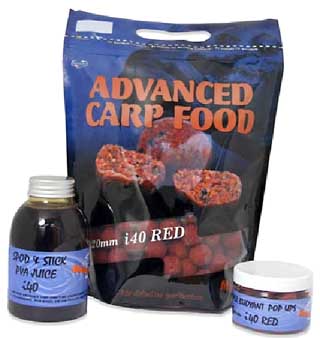 Boilies come in a variety of sizes and in literally thousands of flavours. Some are better than others, but a lot of that is down to personal preference. You do need to be confident in your carp bait, if you are not, you may as well give up before you even make the first cast. The one disadvantage to the novice angler is that boilies need to be attached to a hair on a hair rig. Although not too difficult, rigs are a science of their own and can be confusing to start with. A properly set up hair rig and correctly chosen lead system do however account for the majority of larger carp caught these days and so you will need to master them.
Boilies come in a variety of sizes and in literally thousands of flavours. Some are better than others, but a lot of that is down to personal preference. You do need to be confident in your carp bait, if you are not, you may as well give up before you even make the first cast. The one disadvantage to the novice angler is that boilies need to be attached to a hair on a hair rig. Although not too difficult, rigs are a science of their own and can be confusing to start with. A properly set up hair rig and correctly chosen lead system do however account for the majority of larger carp caught these days and so you will need to master them.
Probably more carp anglers use boilies as carp bait than any other bait. As a bait they are easy to use, easy to store and have proven results when fishing for carp.
So what types of boilies are there? Well apart from different sizes, the main types are shelf life, frozen, and homemade. Shelf life are available in most tackle shops and via mail order. They will keep for months in their original packaging and even once opened will last a fair while if kept cool and dry. They will however become very hard if allowed to dry out and are subjected to the sun for too long. If they get damp, they may well go mouldy. Once you have opened a packet, try to use them during the session or freeze them once you get home. They will also tend to lose some flavour once opened and you should try to use a new batch each session.
Frozen boilies are becoming far easier to purchase nowadays as most tackle shops will have a dedicated bait freezer just for boilies and dead baits normally fully stocked. If possible take just what you think you might use during the session and try not to re freeze your unused boilies as this can dramatically affect the flavours and nutrients in the bait. Homemade boilies are by no means easy to make consistently and require a lot of specialist equipment, time and expertise, however the personal rewards of catching on your own bait are there to be enjoyed. For many anglers these rewards mean they wouldn’t consider using any boilies that they had not made themselves. They will of course always be fresher and you can make them to your exact requirements to suit the water conditions and feeding habits of the carp you are fishing for.
Boilies are not the only bait that carp can be caught on, other carp baits fall into several categories, they include: man-mades, pellets, pastes, particles, naturals and floaters.
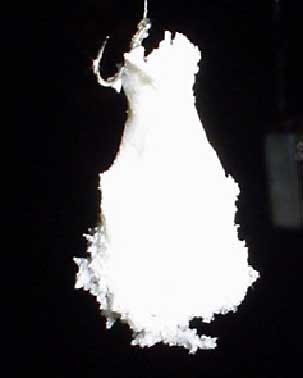 Man-made bait can be baits such as bread, meats, cheese, sausage, in fact anything available on the shelves of a supermarket which carp will eat. Bread is of course the old favourite carp bait and can be used in many forms for example flake, where the bread is squeezed gently onto the hook at the eye end only leaving a fresh clump of bread around the rest of the hook. Paste, where the bread is dampened and rolled into a ball, and may be flavoured before use.
Man-made bait can be baits such as bread, meats, cheese, sausage, in fact anything available on the shelves of a supermarket which carp will eat. Bread is of course the old favourite carp bait and can be used in many forms for example flake, where the bread is squeezed gently onto the hook at the eye end only leaving a fresh clump of bread around the rest of the hook. Paste, where the bread is dampened and rolled into a ball, and may be flavoured before use.
And then of course crust, where just a piece of the crust is attached to the hook and allowed to float on the surface to temp the carp. Cheese is another old favourite carp bait of mine, any type of cheese that will stay on a hook can be used, either cut into cubes or moulded around the hook. Meats such as luncheon meat are popular with many anglers and have accounted for a lot of fish. Again this can be cubed and attached directly to the hook or used on a hair rig. Try experimenting with some of the more unusual flavours such as spiced pork or curried flavour, or flavour your own.
Also the spiced sausages available now are popular with the carp. Fresh meat will also catch, liver can be a great attractor of carp with its high blood content. I have also caught carp close to the edge with tinned meat balls, but don’t try casting them, especially if there is someone opposite you on a smaller lake. They also get a bit messy and are a bit too tempting if your lunch has already gone. The key is to experiment and try to use something that the fish haven’t seen before.
Pellets are available in the shops in a huge variety of forms, and as well as the old favourite trout pellets, a lot of specially made carp pellets are now becoming popular. Pellets with both high oil like marine halibut pellets, which are suitable for warm weather fishing, and low oil pellets, which are easily digested and as such work well during the cooler months. Pellets can either be attached to a hair if they are large enough, or for the smaller softer types, try hooking them directly on the hook or making them into a paste by adding hot water for about half an hour, not too much or they will just dissolve. If they won’t stay on the hook, an egg added to the mix will do the job.
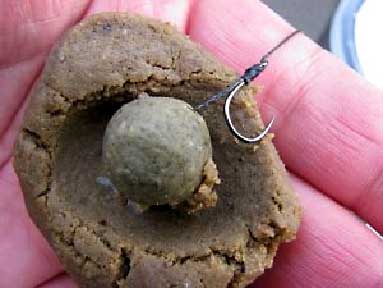 Pastes are now easily brought from your local tackle shops and come in a huge array of flavours colours and textures. many carp bait companies are now offering pastes to match the boilies you might be using. Paste offers a huge edge to the carp angler when it used to wrap the boilie as the paste has a huge leak off rate and make the bait looks as if it’s been sat on the lake bed for many days rather than just a few minutes and can bag you many a carp.
Pastes are now easily brought from your local tackle shops and come in a huge array of flavours colours and textures. many carp bait companies are now offering pastes to match the boilies you might be using. Paste offers a huge edge to the carp angler when it used to wrap the boilie as the paste has a huge leak off rate and make the bait looks as if it’s been sat on the lake bed for many days rather than just a few minutes and can bag you many a carp.
Particles cover a massive spectrum of baits. One of the most popular is hemp. Its rich oily content when cooked attracts the carp, and its small particle size gets them grubbing around on the lake bed and churning it up looking for more. If your bait is amongst it, there is every chance that they will find it. It is of course too small to put on a hook, and is normally used as an attractor with a larger pellet on the hook. Hemp pellets are available and this can be a deadly combination. Other particles include pigeon conditioner, wild bird seed and just about any seed, and of course the pulses such as beans, peas and chick peas, sweet corn, the old favourite nuts make great carp baits.
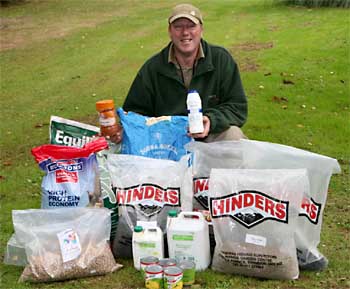 All of these potential baits are available from a local animal feed specialist and you will be surprised at how much you can get for you money. Most nuts and seeds will need to be well soaked and correctly cooked before use and it essential to get this right. If you are not sure, seek advice from your bait dealer or fishery owner. Many waters ban certain particles and I recommend checking this before preparing your bait. The ideal situation is to have the carp feeding confidently upon the multitude of mini particles (seeds and pulses) we have put out for them.
All of these potential baits are available from a local animal feed specialist and you will be surprised at how much you can get for you money. Most nuts and seeds will need to be well soaked and correctly cooked before use and it essential to get this right. If you are not sure, seek advice from your bait dealer or fishery owner. Many waters ban certain particles and I recommend checking this before preparing your bait. The ideal situation is to have the carp feeding confidently upon the multitude of mini particles (seeds and pulses) we have put out for them.
However trying to put these micro particles upon a hair and then to get it to look natural is virtually impossible. With carp feeding strongly on mini particles it can be difficult to get them to pick up a large boilie. So with this in mind try fishing grains of fake corn or even fake maize over the top of the particles. With the recent invention of a plastic stocking material from Fox called Arma Mesh you can now make small 12mm bags of particles or even your spod mix, this has bagged me no end of carp who see the bag of particles as just large lump of particles.
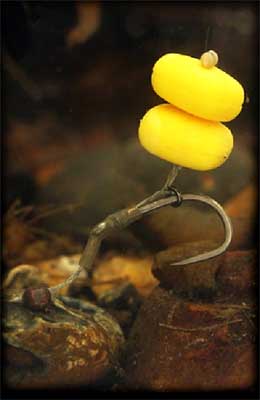 Natural carp baits include maggots, casters, worms, insects and anything that occurs naturally in the water or out of it. However never forget baits like cockles, which can be attached directly to a hook or thread one or more onto a hair rig. Also try shrimps and prawns and other sea foods and freshwater mussels are a favourite of carp where they occur naturally.
Natural carp baits include maggots, casters, worms, insects and anything that occurs naturally in the water or out of it. However never forget baits like cockles, which can be attached directly to a hook or thread one or more onto a hair rig. Also try shrimps and prawns and other sea foods and freshwater mussels are a favourite of carp where they occur naturally.
Lastly then, floaters. If it floats and carp will eat it, then try it. Chum mixer, any other dog or cat biscuits, seeds (soaked first to enable hooking), floating boilies and as mentioned before bread crust. Experiment here. I have seen carp caught on Maltesers. Luncheon meat when microwaved for a few seconds will float, give it a try. Also experiment with flavours, either in dip form, or spray cans. For dog mixers, place a bit of flavouring in a polythene bag with the biscuits, inflate and then tie the top. Shake to mix them well and then store ready for use.
The key is always to experiment. Don’t just arrive at a water and copy everyone else. They may all be blanking. If you come up with something different that no-one else is using and the carp like it, you could clean up. Do remember though to check with the fishery owner that the bait you intend to use is allowed. Some baits, e.g.: peanuts and tiger nuts, are banned on some waters and this must be adhered to. It is usually for a good reason and in the interests of the fishery and the fish.
Remember to enjoy your fishing, follow the fishery rules, but don’t be a sheep and follow the flock. Try looking at other baits that will give you an edge over your fellow anglers.
Tight Lines.
Ian Gemson










